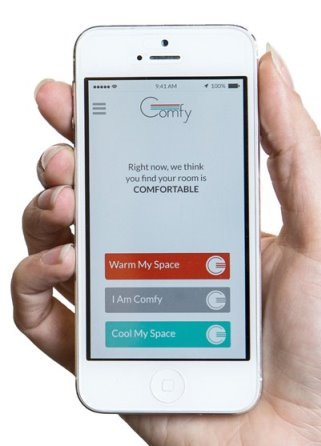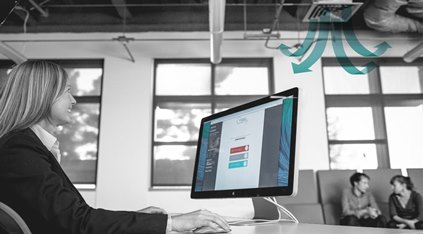 EMAIL
INTERVIEW
– Lindsay Baker and Ken Sinclair
EMAIL
INTERVIEW
– Lindsay Baker and Ken Sinclair|
January 2014 |
[an error occurred while processing this directive] |
| |
 EMAIL
INTERVIEW
– Lindsay Baker and Ken Sinclair
EMAIL
INTERVIEW
– Lindsay Baker and Ken Sinclair
Lindsay Baker is the VP for Research and Marketing at Building Robotics, Inc, a new venture-backed software startup. She is responsible for client relationships and occupant experience at BR, as well as leading marketing efforts for the new software, Comfy. A former consultant to Google’s Green Real Estate Team, and the initial team that developed the LEED Rating System, she has extensive experience in implementing and evaluating energy efficiency programs. Lindsay is a LEED AP and a Ph.D. candidate at Berkeley’s Center for the Built Environment, a leader in occupant comfort and behavior research.
"Control
by the People For the People"
a software layer that
incorporates occupants as sensors for the building, saving energy and
improving comfort at the same time.
| Articles |
| Interviews |
| Releases |
| New Products |
| Reviews |
| [an error occurred while processing this directive] |
| Editorial |
| Events |
| Sponsors |
| Site Search |
| Newsletters |
| [an error occurred while processing this directive] |
| Archives |
| Past Issues |
| Home |
| Editors |
| eDucation |
| [an error occurred while processing this directive] |
| Training |
| Links |
| Software |
| Subscribe |
| [an error occurred while processing this directive] |
Sinclair: You are a new company in the intelligent buildings marketplace, what is Building Robotics?
Sinclair:
How did you get interested in this
issue?
Sinclair: So how exactly does Comfy work?

Sinclair: Why are you working on such a difficult aspect of building automation? A lot of people would say that occupants can never be happy, that this not a problem we can solve.
Sinclair: Where are you seeing the most interest in Comfy?
Sinclair: When will Comfy be available to a larger market, and how will it be sold?
Baker: We're currently demonstrating the technology with a select set of innovative early customers, encompassing a wide range of buildings, occupants and climate zones. We’re working very closely with these clients and are already seeing significant energy savings and comfort improvements. At the end of this phase we will begin to offer Comfy more widely.

Comfy is a service, keeping occupants comfortable and saving energy dynamically over time. We’re adding new features continuously, and providing ongoing support to occupants and building management. Comfy will be offered on a subscription basis and is priced by the size of the space being serviced. We’re also working with channel partners for Comfy, and will be pursuing this further in the coming months.
[an error occurred while processing this directive]Sinclair: What are you most excited to work on, in the future?
Baker:
We envision a near-future where
buildings are able to join the connected world, and the pace of change
will radically shift to a new level of intelligence and efficiency. One
of the key challenges has been dealing with the diversity inherent in
buildings, including physical, mechanical and control system
differences. Over the last four years we’ve developed new systems to
deal with these differences, so that software services can be
deployable across a global portfolio of buildings with the click of a
button, no manual integration or custom work needed. This paradigm
shift has the potential to unlock energy savings on a global scale.
A lot of folks have gotten excited about using the Comfy system as a
platform for other features, like occupant Indoor Environmental Quality
(lighting, acoustics) satisfaction feedback, lighting control, and a
number of other ideas. We’re also excited about tailoring Comfy to
other space types, such as healthcare facilities, where temperature can
be a real health issue.
It’s all exciting work, really, because it has a great potential to
make so many buildings run better for people and the environment. We
agree with a lot of analysts who are saying that the next fove years
will
be a huge growth phase for the building automation market, as scalable
and cost-effective solutions like ours emerge. It’s a really
interesting time to be in the building automation community.
[an error occurred while processing this directive]
[Click Banner To Learn More]
[Home Page] [The Automator] [About] [Subscribe ] [Contact Us]